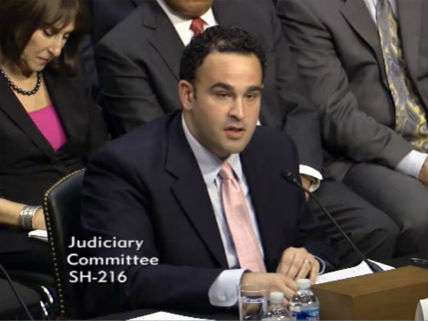Anti-Pot Group Blames 'Big Marijuana' for Possibly Nonexistent Increase in Adolescent Cannabis Consumption
Neither Colorado nor Washington has seen a statistically significant change in underage use since legalization.

A recent analysis of data from the National Survey on Drug Use and Health (NSDUH) shows a small, statistically insignificant increase in cannabis consumption by Colorado teenagers between 2012-13, when marijuana possession by adults 21 and older became legal in that state, and 2013-14, when state-licensed merchants began selling marijuana to recreational consumers. The share of 12-to-17-year-olds reporting marijuana use in the previous month rose from 11.2 percent to 12.6 percent. (The state prevalence estimates combine two years of data to compensate for relatively small samples.) The anti-pot group SAM ("Smart Approaches to Marijuana") made the most of the new numbers:
Colorado now leads the country in past-month youth marijuana use, after legalizing marijuana in 2012. The state claims this dubious distinction after being in third place in the 2012-2013 report, and in fourth place in the 2011-2012 study.
By focusing on the change in Colorado's rank, SAM obscured the fact that neither of these changes was statistically significant, a point that SAM President Kevin Sabet further obfuscated by blaming "Big Tobacco" for a possibly nonexistent increase in underage use. "In Colorado especially," he said, "Big Marijuana has been allowed to run wild, and it appears that kids are paying the price more than in any other state in the country."
While these Colorado upticks may turn into a meaningful trend, there are reasons to be skeptical that legalization is to blame. First, the rate of adolescent marijuana use in Colorado was relatively high and rising years before the drug was legalized. Second, the share of teenagers reporting past-month marijuana use in Washington, which legalized the drug at the same time, has been essentially flat: 10.1 percent in 2013-14, compared to 9.8 percent in 2012-13 and 9.5 percent in 2011-12.
As with Colorado, none of those changes was statistically significant, and the percentage of teenagers reporting past-month cannabis consumption rose more in several states that did not legalize marijuana, including Arkansas, Kansas, Maryland, and New Jersey. According to the NSDUH data, only three states saw statistically significant changes in adolescent marijuana use between 2012-13 and 2013-14: Hawaii, Ohio, and Rhode Island, all of which saw decreases.
Legalization supporters like to point out that state-licensed marijuana merchants, unlike black-market dealers, card their customers. But that is also true of alcohol, which teenagers nevertheless manage to obtain via adult buyers. As I've said before, it is plausible that diversion from the newly legal adult marijuana market in states such as Colorado and Washington will lead to an increase in adolescent use. But it will take several more years of data, plus comparisons to pre-existing trends and numbers from other states, to get a better sense of whether that is actually happening.


Show Comments (15)